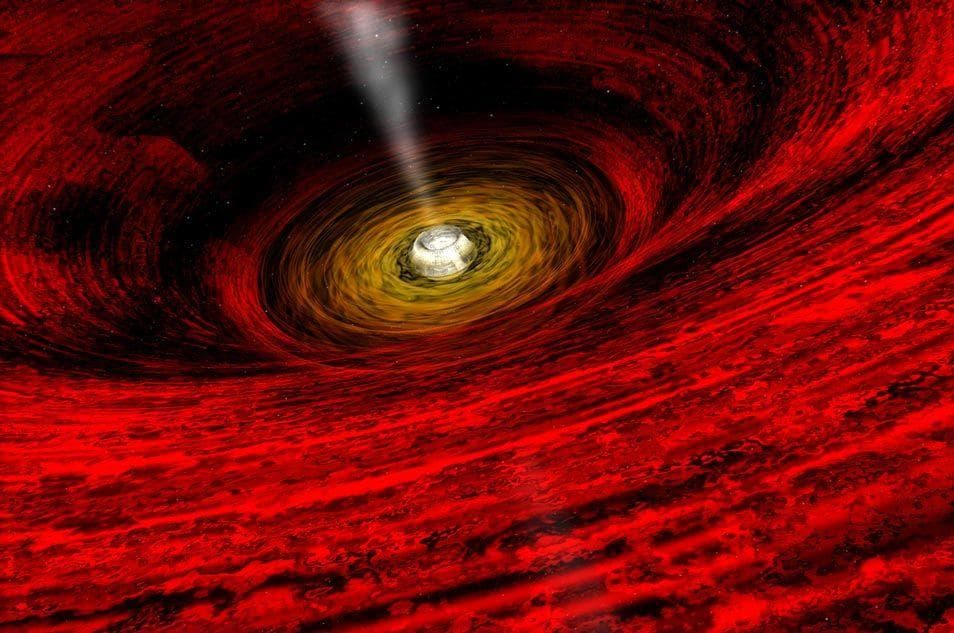-
(#8) Some Astronomers Thought It Was An Alien Spacecraft
Because it's shaped the way it is, scientist wondered - could ‘Oumuamua be some kind of spacecraft? It couldn't hurt to find out. Breakthrough Listen project scientists used the Green Bank telescope in West Virginia to listen for any galactic chatter from the object.
They've only found silence, thus far and there's no evidence that ‘Oumuamua is anything more than a space rock hurling past us to some unknown destination. But they plan to keep on listening. Avi Loeb, professor of astronomy at Harvard University and an adviser to the Breakthrough Listen project, said,
“This is a fishing expedition. We are most likely not to find anything, but it is worth steadily checking our fishing hooks. We will keep searching for artificial signals from ‘Oumuamua or any other interstellar object that will be discovered in the future.”
-
(#13) 'Oumuamua May Be From The Remains Of A Massive Planet Colliding With A Red Dwarf Star
‘Oumuamua may have had a violent birth. SETI Institute scientist Matija Cuk believes the elongated object's shape gives it away in that regard. ‘Oumuamua may be the result of a distant planet - much larger than ours - getting too close to a red dwarf star and splitting apart. "Unlike the sun or Jupiter, red dwarf stars are very dense and are capable of thoroughly tidally disrupting terrestrial planets.
I conclude that the origin of 'Oumuamua as a fragment from a planet that was tidally disrupted and then ejected by a dense member of a binary system could explain its peculiarities," Cuk wrote in a paper entitled 'Oumuamua as a Tidal Disruption Fragment From a Binary Star System.
-
(#9) It's Not Attached To Any Star System
Some scientists believe 'Oumuamua originated from Vega, Alpha Lyrae, which is about 25 light years away. However, the star would not have been in the position that it is now 300,000 years ago when 'Oumuamua started its journey toward Earth.
The object may have stumbled in that direction as it has into our solar system."'Oumuamua may well have been wandering through the Milky Way, unattached to any star system, for hundreds of millions of years before its chance encounter with this solar system," Dr. Karen Meech said.
-
(#11) How 'Oumuamua Got Here Is A Mystery
With the possibility that 'Oumuamua has been traveling through space for a very, very long time, how it came to our solar system is still - and probably always will be - a mystery. It has been theorized that it was "bumped" into our trajectory by an unknown planet.
Or, in a more likely scenario, it was ejected from an area around two stars closely orbiting each other, one of which would be affected by the gravity of the other. Either way, while it's the first interstellar traveler of its kind, it certainly won't be the last.
-
(#10) ‘Oumuamua Could Have Held Life But Radiation Likely Fried It A Long Time Ago
This carbon-filled celestial Twinkie may have once held life, but, if it did, researchers think it's probably long gone by now. Alan Fitzsimmons's team at Queen's University, Belfast, believes that the ice inside the object is made from frozen methane, carbon dioxide, or methanol, and its hard shell has kept what's inside from heating up.
However, that doesn't mean anything is still alive inside. “I struggle to imagine how life could live at the frigid temperatures that would exist within a small object in interstellar space,” Fitzsimmons said.
-
(#3) 'Oumuamua Has Two Names
An object this unusual has to have a name that fits. 'Oumuamua was discovered via a University of Hawaii telescope, and its nickname is Hawaiian for "a messenger from afar arriving first." 'Oumuamua's formal name, 1I/2017 U1, has a very specific meaning.
The "I" stands for "interstellar." Objects similar to 'Oumuamua have "C" or "A" names, which places them in either comet or asteroid categories, but 'Oumuamua is so different from what we know of both, it has been given an entirely different designation.
New Random Displays Display All By Ranking
About This Tool
Astronomers have discovered a new "interstellar highway" that runs through the solar system in recent years, which can speed up the travel time of spacecraft from the earth to remote parts of the solar system in the future, and monitor and research interstellar objects that may collide with the earth. Mankind has never stopped exploring the solar system. The first exploration was carried out through telescopes.
With the advancement of science and technology, astronomers have been able to observe other interstellar objects in the solar system through high technology such as space probes. The random tool introduced amazing interstellar objects that have been caught through the solar system.
Our data comes from Ranker, If you want to participate in the ranking of items displayed on this page, please click here.









